National Civil Rights Museum : The Lorraine Motel #StJudeBlogTour
Hey Cuties,
Prior to leaving for the St. Jude Blog Tour in Memphis I had one mission and several anxieties. My mission was to visit the now iconic Lorraine Motel where Martin Luther King, Jr. was shot. I’d been to Memphis many years ago but didn’t have a chance to go. This time I was going to make it my mission although our days were full sunrise to sunset. After receiving the agenda I was thrilled to see they were taking us there for a tour. SCORE!!! Now one might wonder why in the world St. Jude would take us to the National Civil Rights Museum. Stick with me and I will spill the tea. Look for the ![]() , this is Day one of the #StJudeBlogTour
, this is Day one of the #StJudeBlogTour
Thanks to St. Jude for a three day all-expense paid experience of St. Jude Children’s Research Hospital, National Civil Rights Museum & Memphis, TN.
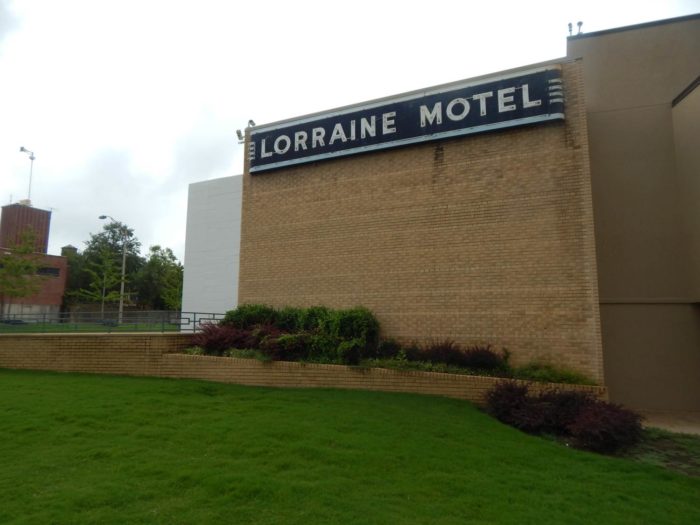
Back Story: The Lorraine Motel can be found at 450 Mulberry Street, in the downtown area of Memphis, TN. In 1945 Walter and Loree Bailey, an African American couple purchased the property and named it The Lorraine Motel after Nate King Cole’s rendition of Sweet Lorraine. With the change of ownership this motel served blacks and whites during the Jim Crow era. In the 50’s & 60’s guest such as Jackie Robins, Sam Cooke, Aretha Franklin and Dr. Martin Luther King, Jr. were regulars.
On Thursday, April 04, 1968 outside of room 306 Martin Luther King, Jr was assassinated. After his death people associated The Lorraine Motel with tragedy and no longer wanted to stay there. In December 1982 the motel would land in foreclosure for $144,000 after struggling for the past fourteen years. Three Memphis locals created the “Save the Lorraine Foundation” to preserve where Dr. King loss his life and the 400 years of African American history. The museum opened in September 1991, it was recently renovated in 2014 to the tune of 27 million dollars.
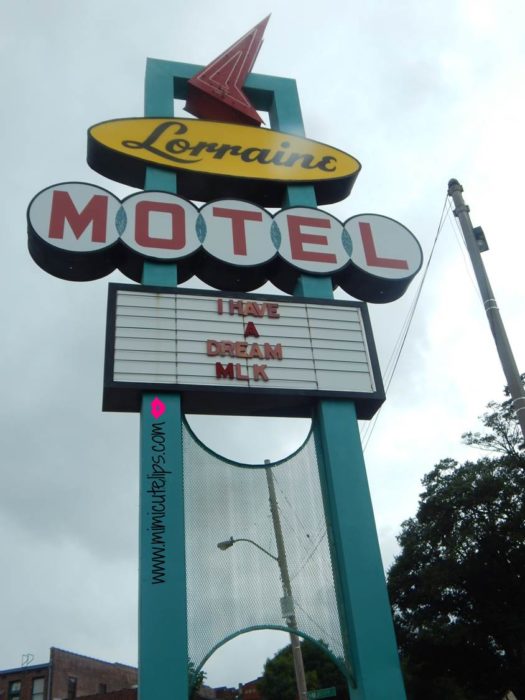
It was raining, but we didn’t care. We were out there in the rain taking pictures and taking in the moment. Our tour was narrated by an amazing tour guide. Actually he is so good he has moved way up from doing tours. The knowledge this man has in his head is incredible. Note: In 2016 some people like to pretend like racism is a thing of the past. For those that think this way please know that you are a part of the problem. We have made progress but we aren’t there yet.
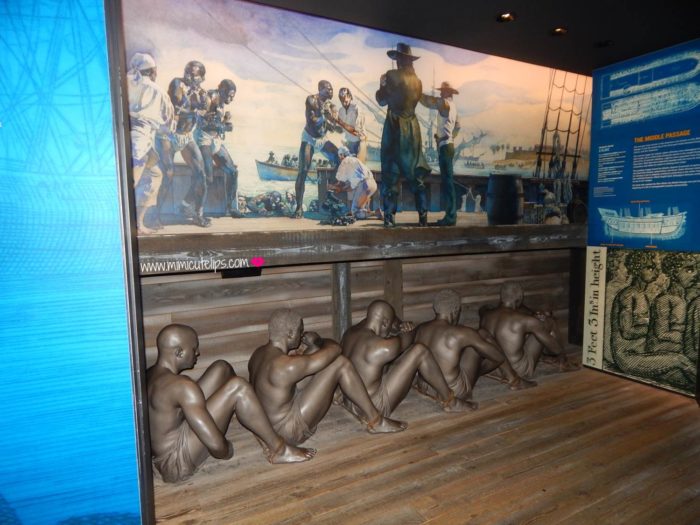
- Slave Culture in America during 1619 – 1861 looked like the picture above. Slaves were forced to other countries and then sold. {Google Middle Passage} Millions of Africans were shipped to the New World as part of the Atlantic Slave Trade. Half of the slaves never made it to their destination. They were transported in the lower part of the ship in very cramped and unsanitary conditions with barely enough room to sit up.
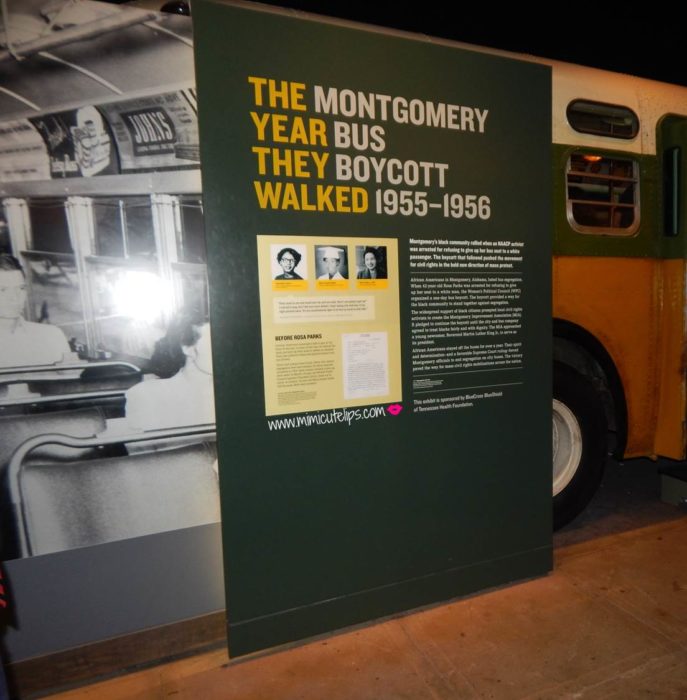
African American passengers had to board the bus in the front, they paid their fair and then had to exit the bus and walk to the back to board the bus again. If the bus became full white passengers would sit in the designated area for African Americans “No Man’s Land” and they now had to stand. If it were rush hour blacks had to get off the bus and walk to their destination with no refund.
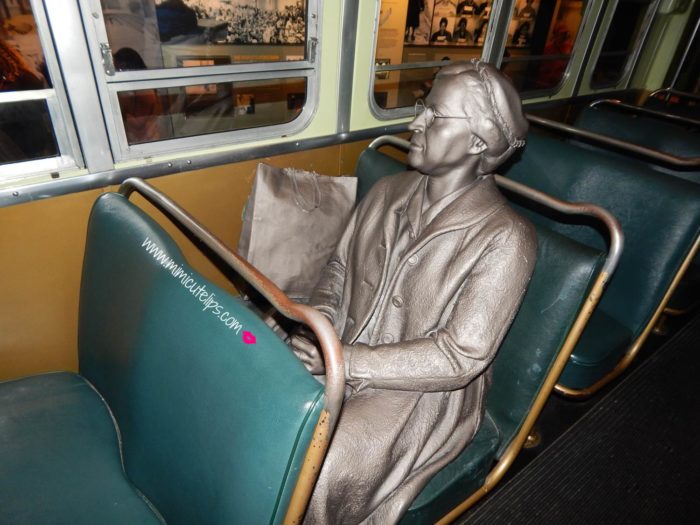
Thursday, December 1, 1955 a 42 year old seamstress by the name of Rosa Park decided to defy the segregation law. She was arrested on the bus that day. Five days after Rosa was bonded out of jail the NAACP in Montgomery decided to have a one day bust boycott. {Fun Fact: NAACP was the first pro Civil Rights organization founded in 1909, in Springfield, Illinois.} Blacks outnumbered the white population by 70 to 30. The first day was a huge success, so much so they decided that they needed a new voice to continue their boycott efforts. They wanted someone the city of Montgomery didn’t know. So they elected a new minister from Atlanta named Martin Luther King, Jr who was 26 years old at the time. For the next 13 months (381 days) the city of Montgomery became the walking city. Blacks walked, carpooled and used black owned taxis to get to their destination. The Supreme Court ruled on Browder vs. Gale. declaring segregation on buses was unconstitutional. This was the first major accomplishment for the Civil Rights movement and of Dr. Martin Luther King, Jr as a leader. Fun Fact: The actual bus she sat on is in Henry Ford Museum in Dearborn, Michigan. This bus was pulled from the original fleet in 1955 in Montgomery Alabama and was used in the 1990 motion picture The Long Walk Home that stared Sissy Spacek and Whoopi Goldberg.
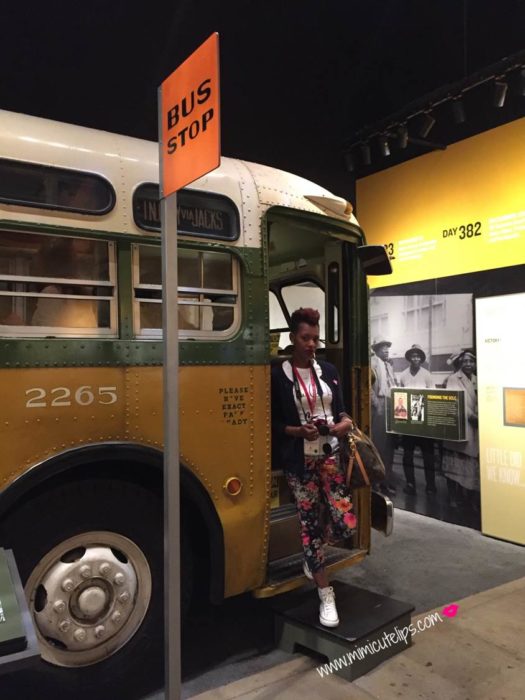
Although Rosa Parks became the Mother of the Civil Rights Movement it is important to note that two African American teenagers refused to give up their seats prior to Ms. Parks. On March 2, 1955 Claudette Colvin refused and in October 1955 Mary Louise Smith also refused to give up their seats. Both ladies were arrested prior to Rosa Parks for not giving up their seats on the bus.
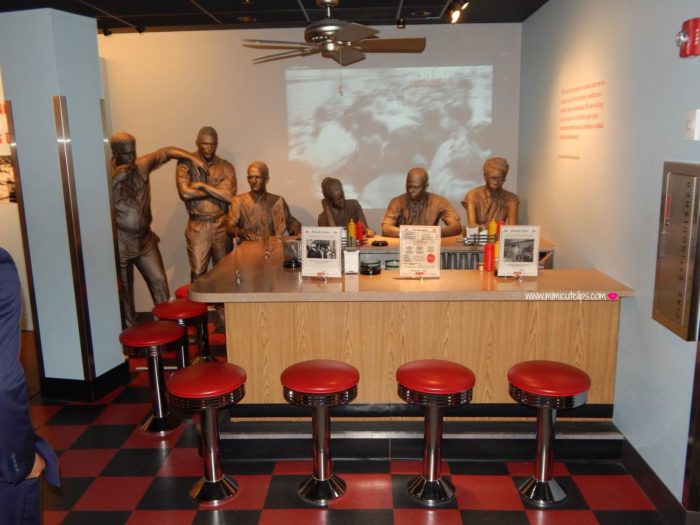
Sit-In and boycotts took place across the country in the early 60’s. Thanks to college students in Greensboro, NC the Woolworth Lunch Counter protest led to desegregation of the F. W. Woolworth lunch counter on July 25, 1960 and other locations. The exhibit above shows the student non-violently protesting via a sit in and non-blacks being violent towards them. During this time Malcolm X didn’t understand why we would want to integrate with people who thought we were inferior to them. He agreed to be non-violent with those that are non-violent with him. The Greensboro Sit-ins were a series of non-violent protest in Greensboro. Fun Fact: The other part of the counter is on display at the Smithsonian National Museum of American History here in Washington, D.C. The family and I actually saw it earlier this year.
Quote on the wall: “We want the world to know that we no longer accept the inferior position of second-class citizenship. We are willing to go to jail, be ridiculed, spat upon and even suffer physical violence to obtain first-class citizenship.”

Sometimes you have to demand that your voice is heard. The March on Washington took place in Washington, DC. This was a march for jobs and freedom. It was historic, it was memorable but most of all it was peaceful. They demanded an end to segregation in public accommodations and schools; a stop to discrimination in employment and housing; voting rights and economic justice. On August 28, 1963 250,000 people from all races, religions and backgrounds marched together in an orderly protest. Dr. King’s iconic “I Have a Dream” speech took place. {This post was written four days before the 53rd Anniversary of the march.}
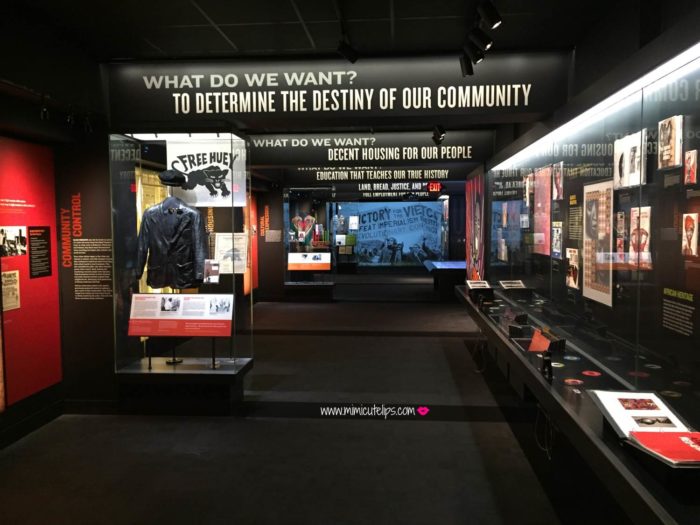
The Black Power movement was a largely misunderstood movement in the civil rights struggle. The Black Power movement was a continuation of the Civil Rights Movement not a radical movement. “Because our color has been used as a weapon to oppress us, we must use our color as a weapon of liberation.” – Stokely Carmichael, 1966
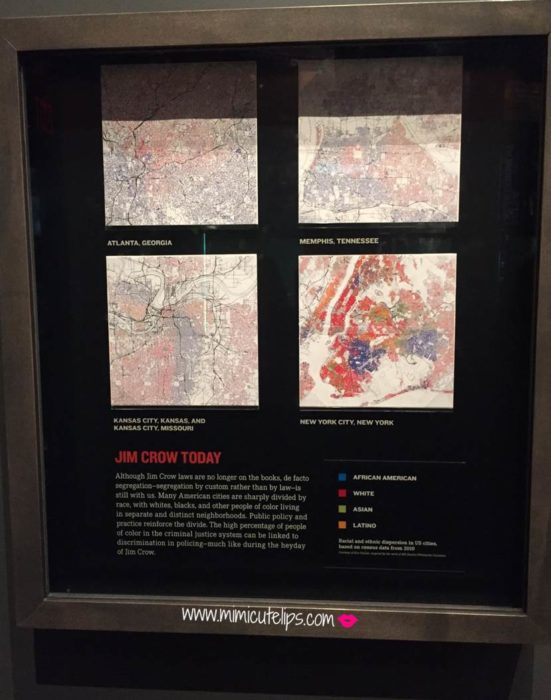
Jim Crow Today, although segregation was abolished people have continued to segregate themselves as reflected in this image. A lot of people think segregation only took place in the south but that is far from the truth. This information is based on the 2010 Census for New York, Kansas City, Memphis and Atlanta.

Our history is very messy and unfair but it is our history. Tell the truth and own the shame that comes with it. Lying about it only makes it more painful.
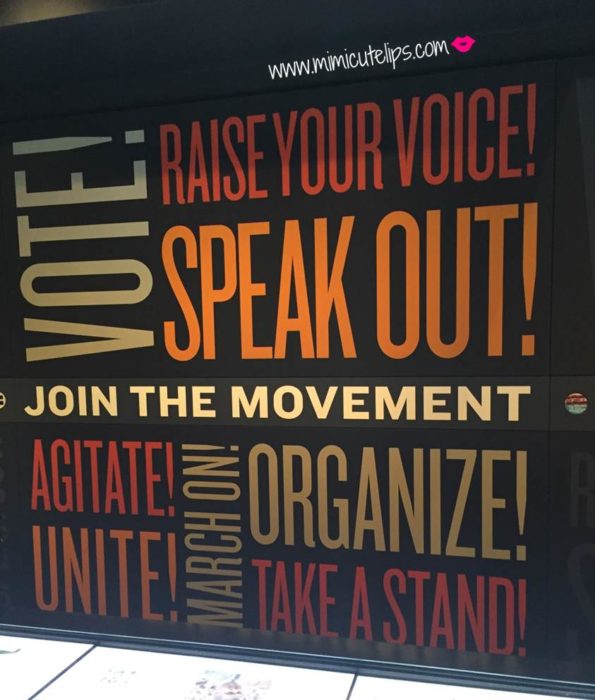
This sign is so important right now in 2016 that I had to snap a picture.

On the evening of April 3, 1968 in Memphis, TN Dr. King gave his last speech. He said he may not get there with you, but spoke of us as a people getting to the promised land. He said he wasn’t worried about anything and doesn’t fear any man because his eyes have seen the glory of the coming of the lord.
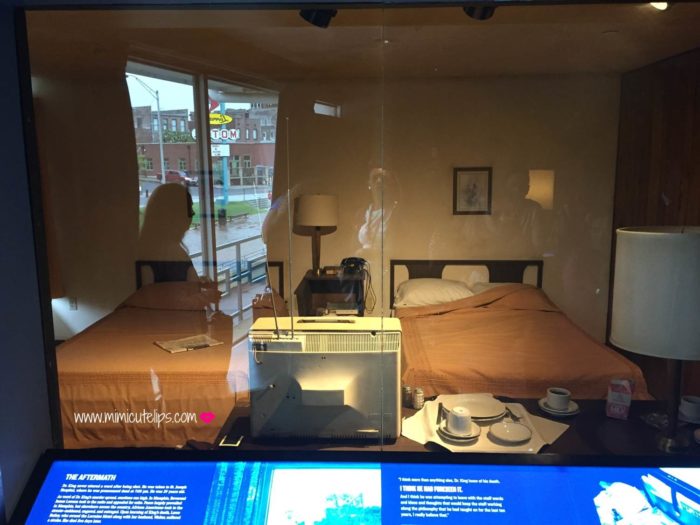
This is room 306, the room Dr. King slept in. When he arrived on Wednesday, April 3, 1968 he had flue like symptoms and a temperature of 101. On top of that there were tornado warnings in the Memphis area.
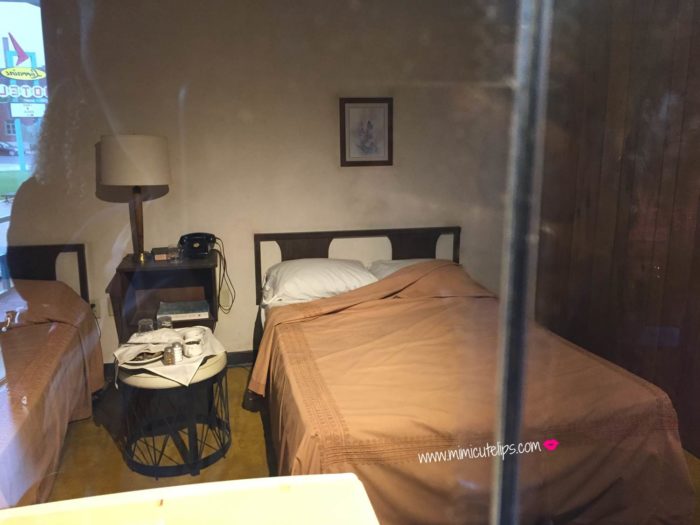
Dr. King’s bed was not made because he had been lying down since he didn’t feel well.
Note: This room was reconstructed in 1982.
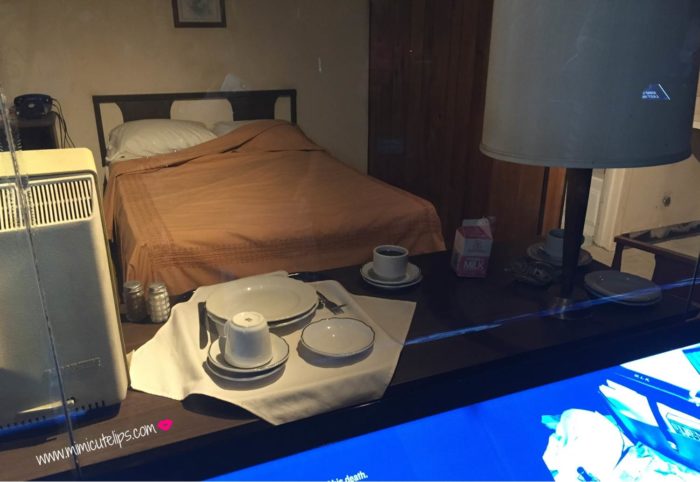
Dishes left in the room were from the kitchen, co-owner Loree Bailey prepared food for the motel’s guests.
On Thursday, April 4th Dr. King put on his suit in this room and stepped outside.
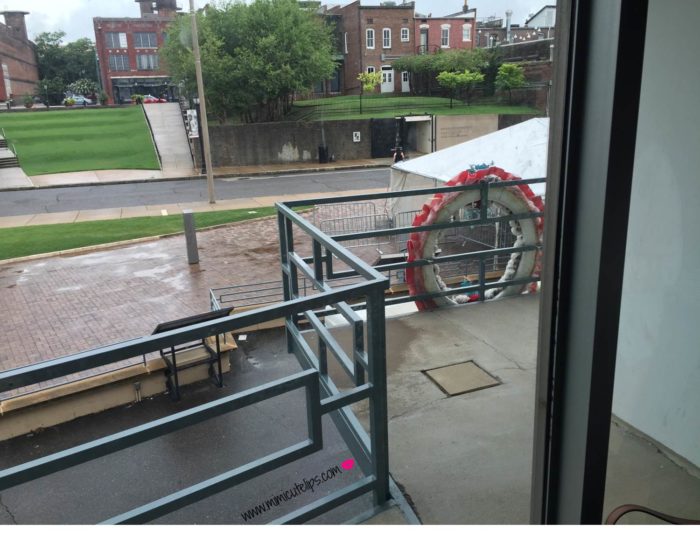
While outside Dr. King spoke to a musician Ben Branch who was there with Jesse Jackson and other friends in the parking lot. Ben asks Dr. King what song he would like for him to play that evening. Dr. King request “Take My Hand, Precious Lord“. Dr. King was headed back to his room to get his coat at the suggestion of his chauffeur Solomon Jones since he had been sick the night before. As he turned to go back in he was hit in the lower jaw, upper neck area and the bullet was lodged in his left shoulder blade. He lay wounded where the block is placed in the picture above. He never uttered a word after being shot. He was taken to St. Joseph Hospital, and pronounced dead at 7:05 pm. He was 39 years old.

Motel co-owner Loree Bailey heard the shot and runs outside and sees what happened to Dr. King. Once she saw him she suffered a stroke and died five days later on April 9th. The same day as Dr. King’s funeral. After her death her husband Walter Bailey continues to run the motel but never rented room 306 or 307 again. It was turned into a memorial and preserved to capture the essence of what it looked like on that tragic night.
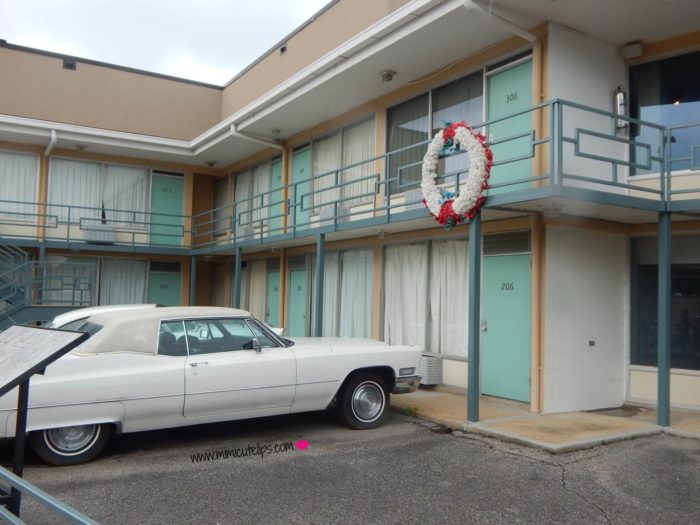
If you look back at the pictures from the day of the assassination you will see two vehicles in the parking lot. At the museum they have replicas of those same cars. The vehicle on the far left {you can’t see it well from this picture} is a 1959 Dodge Royal with green tail fins. The other is a 1968 Cadillac.
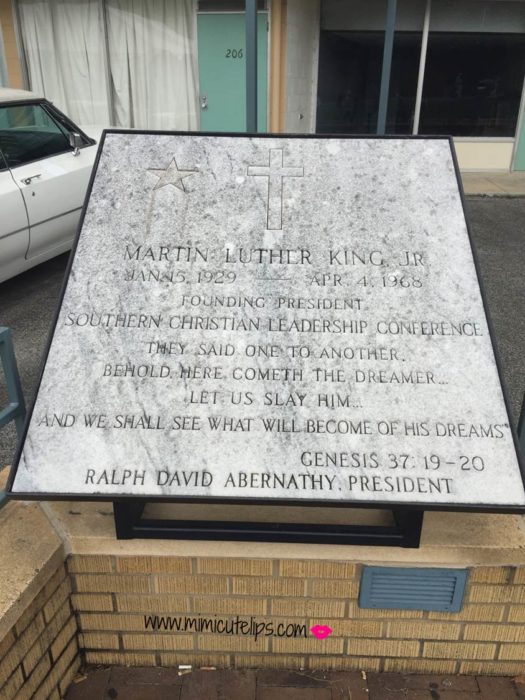
As you view the rooms 306 which was his room and 307 his meeting room you hear the voice of the legendary gospel singer and civil-rights activist Mahalia Jackson. She is singing the song he requested right before his death and the song she actually sang at his funeral. “Take My Hand, Precious Lord”.
After touring this area they took us across the street to the building alleged gunman James Earl Ray was staying. That building is a part of the National Civil Rights Museum as well.
![]() CONNECTION: St. Joseph Hospital was the only hospital in Memphis that accepted African American patients. St. Jude Children’s Research Hospital now sits where St. Joseph Hospital used to be. Founder Danny Thomas {Producer of The Dick Van Dyke Show, The Andy Griffith Show, The Real McCoys, and The Mod Squad.} wanted a hospital that would treat children regardless of race, color, creed or their family’s ability to pay. His vision became a reality on February 4, 1962, St. Jude Children’s Research Hospital opened. Renowned African-American architect Paul Revere Williams designed the hospital during a time when segregation was rampant. In later years St. Jude purchased St. Joseph hospital, the hospital Dr. King was taken to and ultimately pronounced deceased. The integration of St. Jude also extends to the Memphis hotel industry. In order to house St. Jude families, a facility must agree to offer housing to anyone, regardless of race. St. Jude has become one of the world’s premier pediatric research institutions. Danny’s dream has materialized. Fun Fact: Danny is the father to actress Marlo Thomas.
CONNECTION: St. Joseph Hospital was the only hospital in Memphis that accepted African American patients. St. Jude Children’s Research Hospital now sits where St. Joseph Hospital used to be. Founder Danny Thomas {Producer of The Dick Van Dyke Show, The Andy Griffith Show, The Real McCoys, and The Mod Squad.} wanted a hospital that would treat children regardless of race, color, creed or their family’s ability to pay. His vision became a reality on February 4, 1962, St. Jude Children’s Research Hospital opened. Renowned African-American architect Paul Revere Williams designed the hospital during a time when segregation was rampant. In later years St. Jude purchased St. Joseph hospital, the hospital Dr. King was taken to and ultimately pronounced deceased. The integration of St. Jude also extends to the Memphis hotel industry. In order to house St. Jude families, a facility must agree to offer housing to anyone, regardless of race. St. Jude has become one of the world’s premier pediatric research institutions. Danny’s dream has materialized. Fun Fact: Danny is the father to actress Marlo Thomas.
What was your Memphis experience like? Chat with me in the comment below or FB, IG or Twitter.

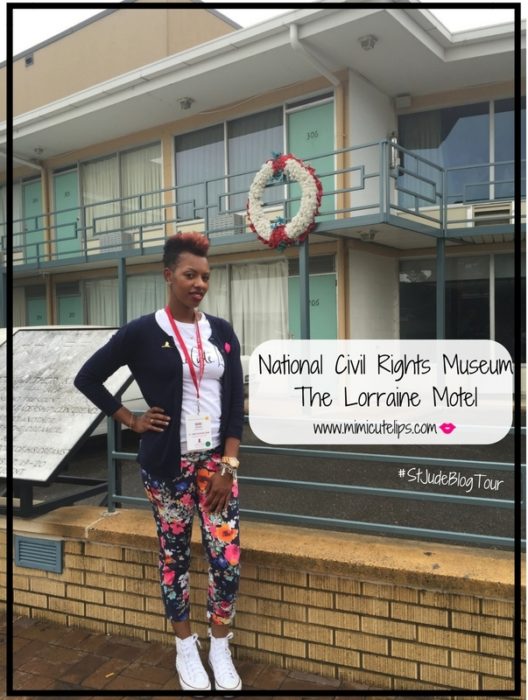

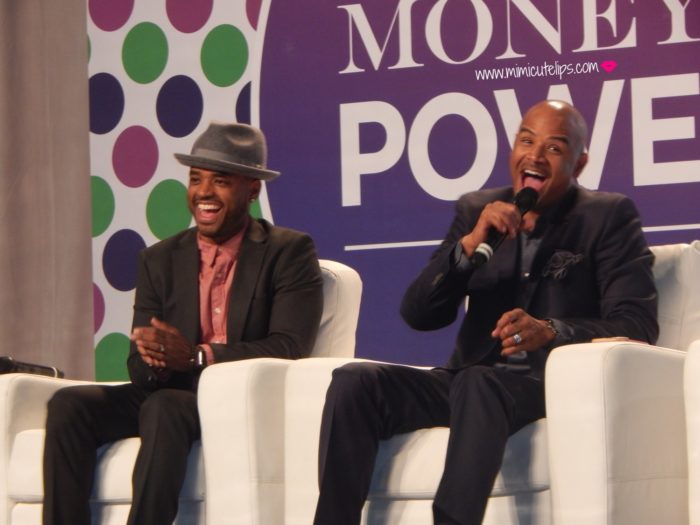

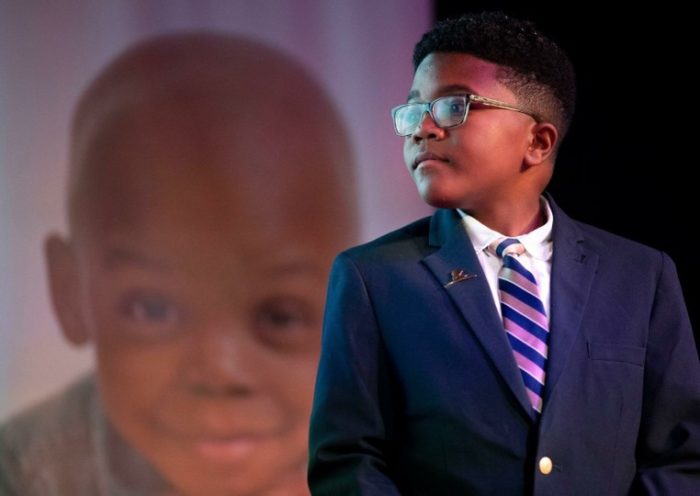
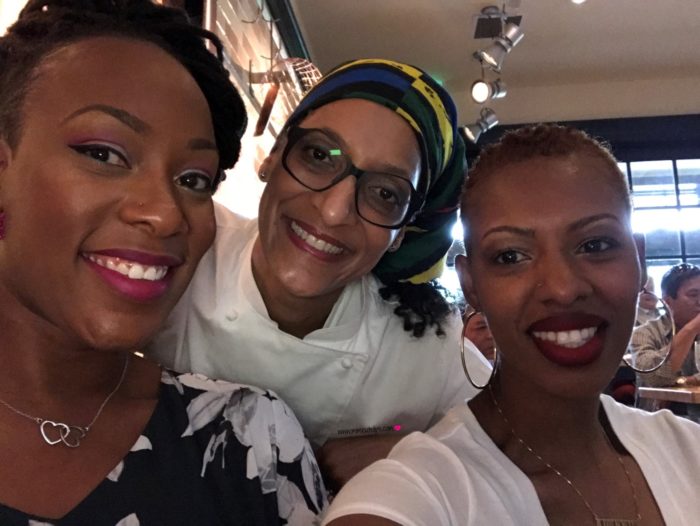


I thought I knew the story of Dr. King’s assassination much better than I actually do. I didn’t realize that the motel co-owner suffered a stroke when she heard the shot and ran outside. I also didn’t know she died the same day Dr. King was buried. I’ve visited his birth home in Atlanta and the historic Ebenezer Baptist Church. I would love to visit the Lorraine Motel. To think that he was only 39 years old! I was nine years old at the time and I vaguely remember that tragic day.
Alli, I thought I knew about his assassination as well. The level of detail that isn’t talked about is crazy. The Lorraine is worth a visit for sure, really deep stuff. He accomplished so much in such a short amount of time.
Sending this post to my daughter. What a great read and history lesson. I will have to get the kids there.
Thanks KenyaRae, it goes beyond the chapter or two in our kids history books.
I have never been to Memphis or the National Civil Rights Museum, this is on my list of history to share with my kids as we travel state to state. Your detailed description makes me want to get there sooner than the summer season. The experience must have been surreal to walk through.
Oh Dana I love the idea of traveling state to state. It really was, a good amount of shock as well.
This must have been quite the emotional visit and l love the way you described it all. I feel like l was walking right alongside you. You learn something new everyday. I didn’t know the hospital where he had been treated but l was a big supporter of St. Jude and knew the philanthropic work of Danny Thomas. So glad they made this museum. It would have been quite the tragedy had they let it go. Thanks for sharing and l hope to be able to visit this place at some point. Great job Mimi! Really. 🙂 😉
Thanks Kem, I had no idea about a lot of these connections. The world is so big and small all at the same time.
This is really amazing. I’ll have to make sure that if I’m ever in that area that this is one of my stops. Most of us are history buffs and museum lovers around here, so this would be a hit 🙂
It is a must for sure Eva. This would be the jack pot for history buffs.
So much history, in one place. Thank you for taking us back to a time, where there was no freedom and people were treated badly. As you said today there is still a issue, and people are still being treated badly.
Yes Nancy, so much of this history is on a repeat loop. I can’t wait for the change to come.
I would love to take a tour of this museum. It’s so disheartening to know that the civil rights movement is still ongoing. Between police shootings and social injustices left and right… Well, I feel like all that should be done with.
I so agree Paula, it is disheartening.
We visited a Civil Rights Museum in Birmingham and it was very powerful. This one sounds like it would be very moving as well.
Yes Pam, I’ve not been to the one in Birmingham. I will keep it in mind if I ever find my way to Alabama.
Wow. There is so much here I didn’t know. What an amazing museum and so much history.
Lisa, the amount of information they have is incredible.
Wow. Thanks for sharing this. I didn’t know any of this. I am in Canada, and although we have learned a little bit about Dr. King I didn’t really know much about his death. What a trip this would be to take, and place to visit.
You are so welcome Jeanine. Sharing is caring, in school they teach the very basics of black history. It is a place to behold, they are a wealth of knowledge.
What a fantastic museum to check out, I will have to visit this when I am in that area traveling. I hope to someday get to that area.
Sarah the museum was incredible. I didn’t even share half of what they had.
Thanks so much for sharing pics from your trip, you got some great shots! It must have been really easy to picture the everyday struggles with the well-preserved sets. It’s true, we’ve made progress, but still have a ways to go.
Thanks for reading Lindsay.
This looks like an interesting tour. I remember learning about Rosa Parks in school. I am not a history buff but I rather learn hands on in a museum rather than reading a book.
I agree Christy, it certainly makes learning more fun.
He is one of the most inspiring people and his preaching and everything else lives on. It’s nice that they have honored him with a museum that will allow people to learn more about him and his work.
He left a major mark on the world and he died at such a young age.
This museum looks awesome! I will surely drop by to this museum when I get there.
It is so worthy of a visit Nicole.
This was an amazing read! Thanks so much for sharing your experience. Whenever I’m up in Memphis, this will definitely be on the list of things to do. I didn’t know a lot of this, so there is much more to learn I suspect!
You’re so welcome Latoya. There is even more to learn for sure.
Wow this is very deep! I’m amazed at the thorough timeline.
It is really deep Abby, they do such a great job at presenting the information.
This must have been moving to see indeed. I didn’t even know about the Lorraine Motel. This would be something my family would love to go see some day. Thanks for sharing the museum a lot with all the information.
Rebecca, that is an excellent way to put it. Moving for sure.
I’ve honestly never heard of this museum but it looks really awesome! Its so cool that they have the actual bus there from Rosa as well!
Jess, it is a huge part of Memphis and history.
The connection with St. Jude and the civil rights moved me. I loved that the Lorraine Motel was a part of the tour. The museum has so many powerful images that I can’t wait to take me children because they need to learn how our presents connects with our pass. Museums like this one provide a rich history, broader self-awareness, and a strong sense of provide. Loved your pictures
You are so right, this is the museum our children need to visit. I’ve only taken my kids to the MLK Museum in Atlanta. You are so right, and I took tons of pictures. More than I could share, it sparks a feeling for sure.
I love history and always enjoy a good museum visit especially if you’re blessed with an engaged and knowledgeable tour guide! I would love to visit this museum!
Jessica now I feel like having a guide is the only way to go. He shared so much more than the exhibits gave.
Wow. What an awesome experience. Thanks so much for sharing the stories and pictures. I felt like I was there with you.
Thanks, it was worth sharing.
I have visited the Lorraine Motel on a HBCU Tour I went on in high school and I can honestly say it is an experience I will never forget!! I am so glad I was able to visit and have such an amazing experience.
Oh wow Kayvona, that sounds like an awesome time to go.
One of these days I need to visit this museum and other historical sites in Memphis.
You totally should Kim, it is incredible.
Wow! As an Army Brat I lived in Tennessee (Clarksville) for 4 years of HS, have family who still lives there and we’ve never once been to Memphis or this museum! Thanks for the virtual tour and all the history/ info. You’ve inspired me to make a plan and visit one day soon.
Oh wow Jazz. You guys have a jewel in your backyard.
Looks like an amazing experience. I’ve been wanting to go since reading about Vashti’s experience and included it in one of my roundups earlier this year.
Yes Joanna, it is incredible for sure.
I love history Mimi! I had no idea this existed. I can’t wait to visit this.
Then this is perfect for you Tanya. History on top of history.
This is so amazing! I would love to visit. There is so much to learn and to touch actual pieces from the past would be awesome!
Katherine it is a lot to learn. I felt like I should have taken hand written notes and turned in a report at the end.
I would like to see this. And you are right those kind of people are part of the problem.
Right Holly.
You narrated the experience so well. I felt like I was there! It’s amazing how they preserved everything.
Thanks Jonna, I was trying. The tour was incredible.